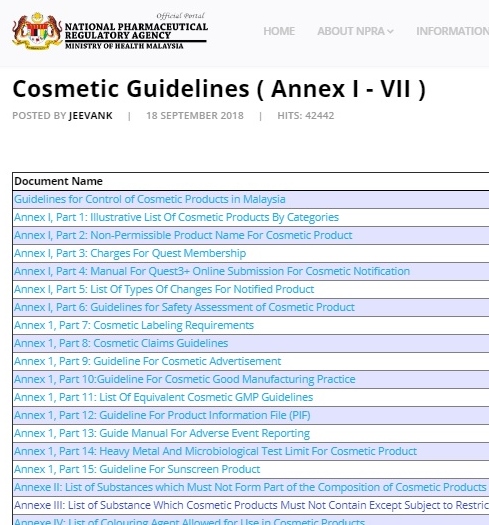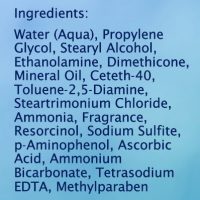CHOOSING THE RIGHT AND SAFE HAIR DYE
GET A HAIR DYE THAT'S BEST FOR YOU
When silver strands start to show, especially before we expect them, it could be troubling. Greying of hair, amongst others, a sign of ageing and an inevitable part of nature which probably no one likes or welcomes. We naturally look for ways to hide or cover it. Hair dye is the most common solution for grey hair cover.
There are suggestions on homemade DIY hair dyes with natural ingredients, such as lemon, carrot, beet juice and so on. These are great ideas and no doubt healthy but they generally do not work well with Asian black hair except henna. Making them requires an effort and could be time-consuming. Another question is how long can the colour last. The easiest way to cover grey hair is to use ready-made, ready-to-use hair dye which can be applied at the convenience of our homes. It saves us the time and money going to the salon.
HOW CAN WE CHOOSE HAIR DYE PRODUCTS?
With countless hair dye products in the market, how do we choose what is reasonably the best, if not the best of all, that fits our budget? A little research is worth the effort! It begins with the needed awareness.
Most of the hair dyes in the market contain various chemicals in their ingredients. These chemicals are necessary to make hair dyeing more effective. While not all chemicals are bad, there are some which we need to look out for the potential health hazards they pose.

How can we know what chemicals pose more potential health hazards than others? A material safety data sheet (MSDS) or product safety data sheet (PSDS) provides information on a substance or combination of substances such as chemicals, chemical compounds or mixtures.
It is important to note that the MSDS mostly provides information for each substance or chemical based on its full or high concentration and it is intended for the occupational safety and health of those working with and handling these substances. Chemicals added to a hair dye product to enhance its effectiveness are at very low or even negligible concentrations. Nevertheless, the MSDS gives us an idea of the potential health hazards, if any, associated with the chemical which could be an ingredient in the hair dye we use or intend to purchase.

REGULATIONS ON CHEMICAL INGREDIENTS IN HAIR DYE PRODUCTS
Each country has its own set of regulations and guidelines for the control on the usage of chemicals in cosmetic products. In Malaysia, hair dye is regulated as a cosmetic product. The content of Guidelines for Control of Cosmetic Products in Malaysia is adapted from the ASEAN Cosmetic Directive (ACD). It is worth finding out the relevant regulations in the country you are living in.
Under these guidelines Annex II lists substances (chemicals) which MUST NOT form part of the composition of cosmetic products. Annex III lists substances which cosmetic products must not contain except subject to restrictions and conditions laid down. It is worth mentioning that chemicals used for hair dye products form the longest list!
Chemicals are needed for the jobs they can do though they may pose some potential health hazards.

WHAT IS CONSIDERED SAFE
Fortunately, as mentioned earlier, the synthetic chemicals, if included in the ingredients, are generally added at very low concentrations. The question is how low is low and at what concentrations are they safe? The Product Safety Data Sheet or MSDS of the hair dye product shows the ingredients and their respective concentrations. The Product Labelling lists the ingredients in descending order of concentrations by weight. As a user we do not get to see the actual concentration of each chemical from the product labelling. At least we can be informed, look out for the more hazardous chemicals and make our choice.
Thankfully, the Guidelines for Control of Cosmetic Products in Malaysia, or in your country, stipulate the concentration limit of each hazardous chemical. For products which have been notified to and approved by the authority, the concentrations of chemical ingredients have been declared. They are deemed to be in compliance with the regulations and thus safe for use. However, there are definitely hair dye products sold in the market which have not gone through this process. So, do you know whether the hair dye or hair colour you use or your hairdresser use on your hair has been approved by the relevant authority?
In view of the potential health hazards posed by the synthetic chemicals are we going to ditch them all and go for 100% natural ingredients?

PROFESSIONALS' VIEWS
Hair colorants are formulated to work specifically on the hair. Although they do come into contact with the scalp during application, a negligible amount of the product is likely to be absorbed, and that will be eliminated from the body within 24 hours. This is acknowledged by the European Commission’s expert panel (the Scientific Committee on Consumer Safety, SCCS).
Food and Chemical Toxicology: an international journal published for the British Industrial Biological Research Association 2004 Apr;42(4):517-43 titled “Toxicity and human health risks of hair dyes” concluded that the weight of evidence suggests that consumer or professional exposure to hair dyes poses no carcinogenic or other human health risks.
Critical Reviews in Toxicology 2007;37(6):521-36 titled “The debate on carcinogenicity of permanent hair dyes: new insights” stated that today, there seems to be no relevant bladder cancer risk from the use of oxidative hair dyes.
However, as published in the International Journal of Cancer, a study at the National Institutes of Health found women who reported regular use of permanent hair dye experienced a 9% higher risk of breast cancer compared with those who didn’t use the products. Although the risk of cancer cannot be determined by any one single factor, it is advisable to avoid the potential cancer-causing chemicals to reduce the risk.
